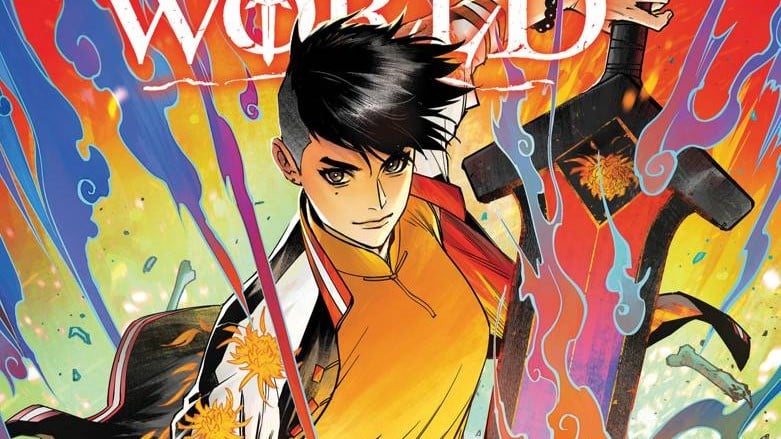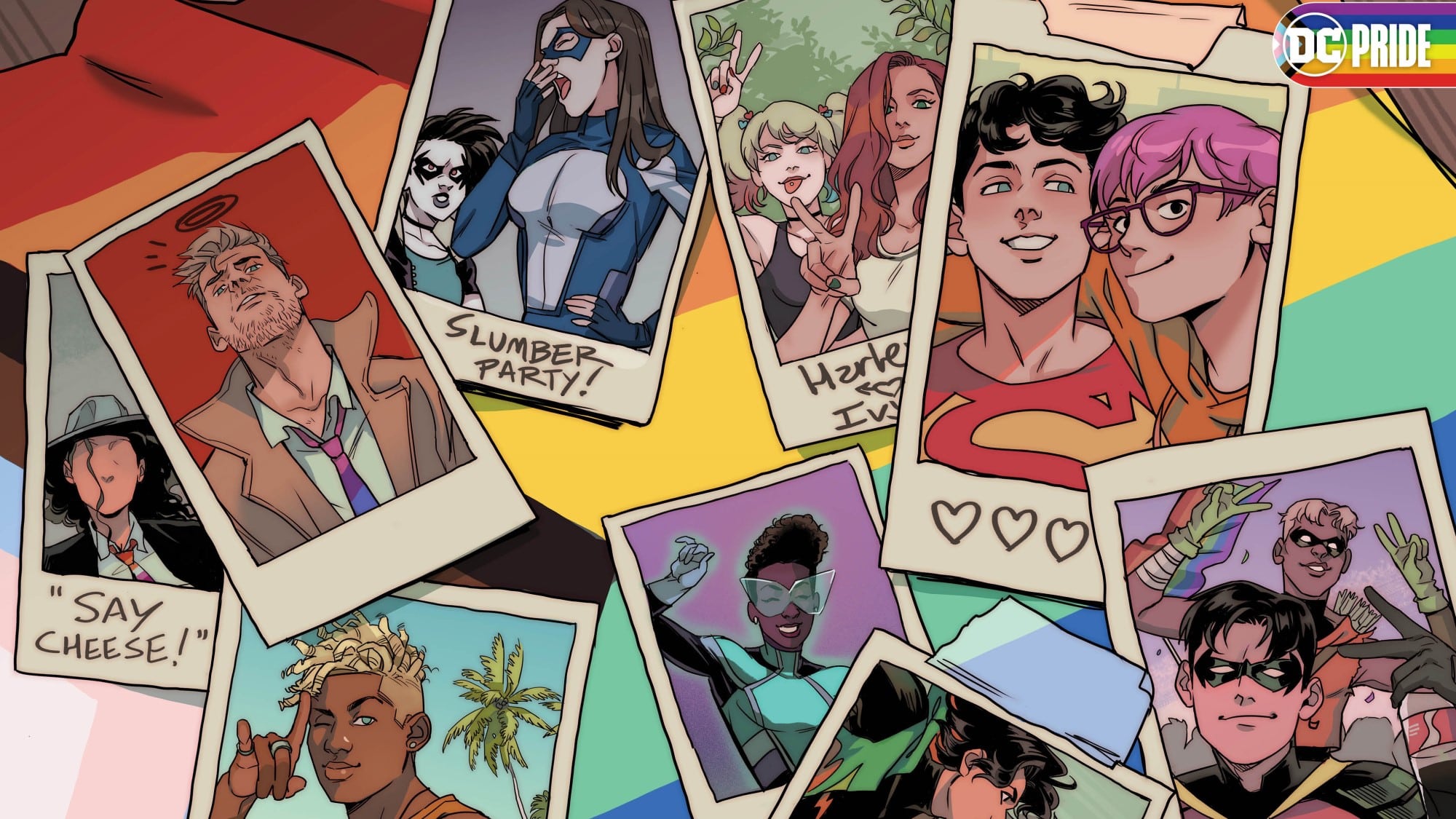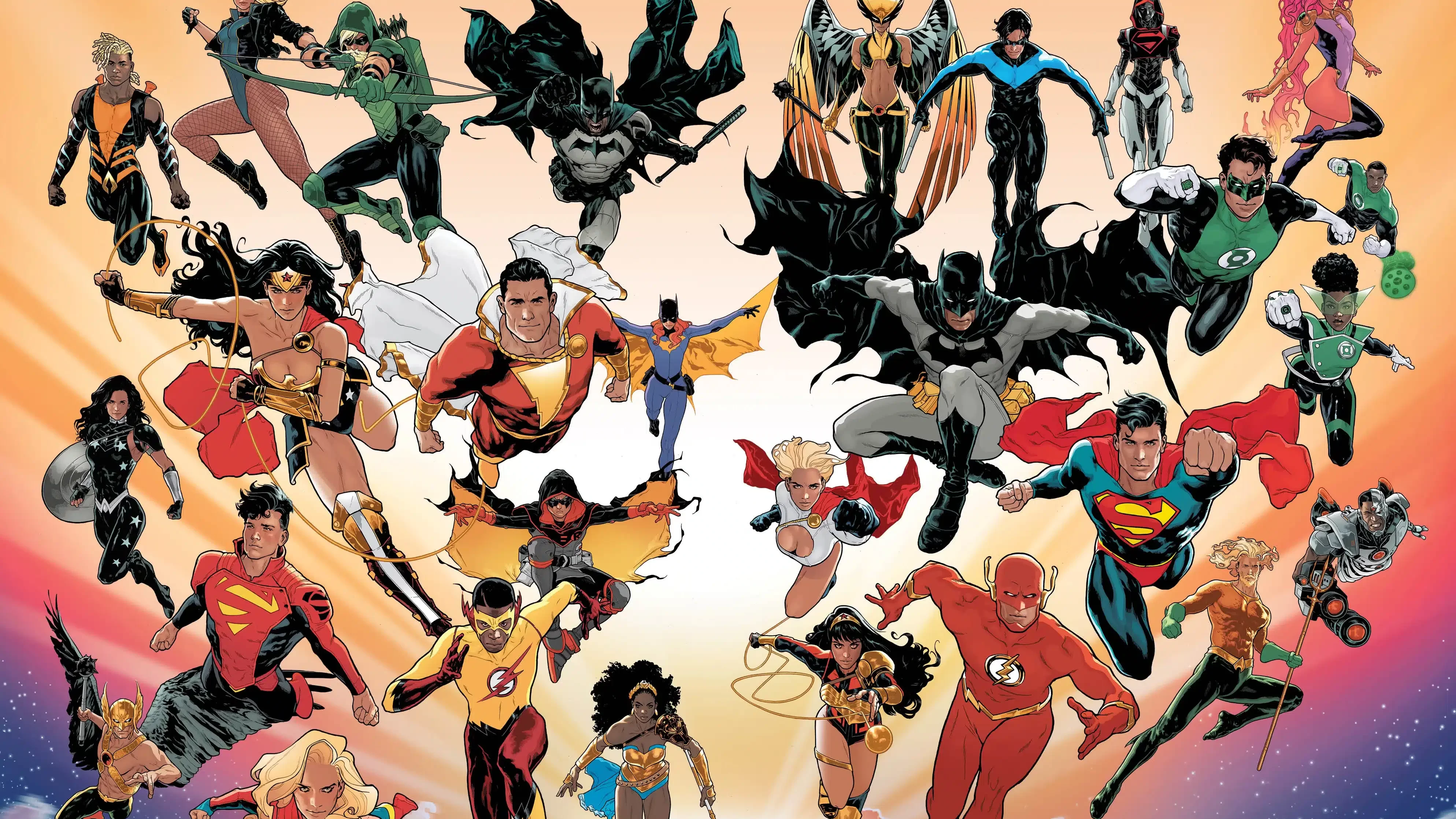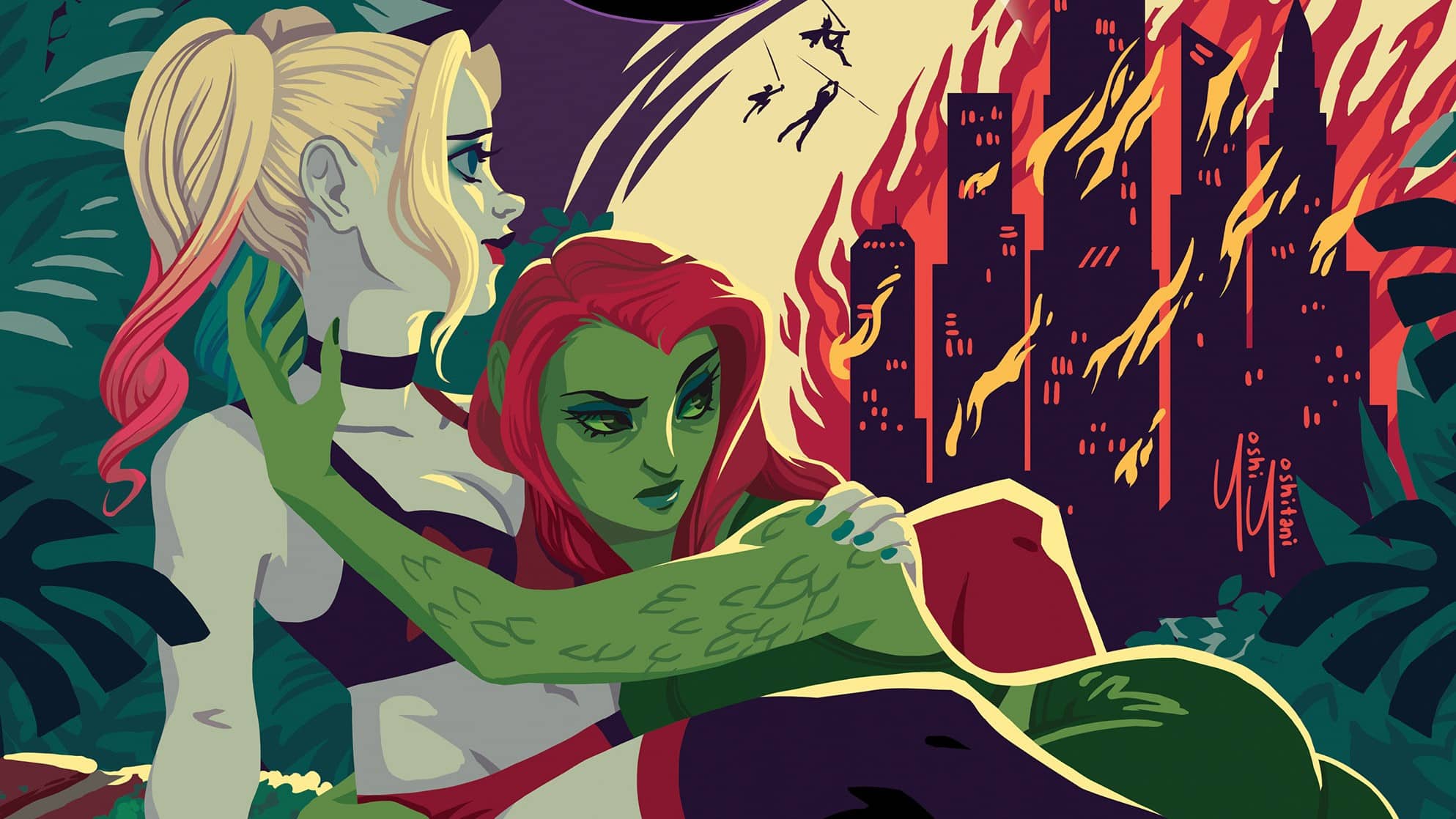Spinning out of Lazarus Planet: Dark Fate, it’s Spirit World! This life/death-hopping book is written by Alyssa Wong, drawn by Haining, colored by Sebastian Chen and lettered by Janice Chiang.
As a Black-Asian comic book fan, I am almost always interested in seeing Asian superheroes. DC Comics’ limited series Spirit World introduces a new nonbinary Chinese hero with a giant buster sword named Xanthe Zhou. While the cover of the first issue had me sold on Xanthe alone, their powers especially piqued my interest.
You see, Xanthe serves as the bridge between the living and the dead. As such, they have the ability to transform joss paper offerings to the dead into living objects. For context, joss paper is traditionally Chinese incense paper burnt for the dead, sometimes alongside offerings of food. As the child of a Vietnamese mother, joss paper is known to me as replica money for the dead. While Chinese joss paper and Vietnamese joss paper look different, they both serve the same purpose of ensuring dead loved ones are remembered and have a peaceful afterlife.

In fact, the significance of joss paper and being remembered in life and death play large roles in the overall plot of Spirit World. Taking place just after the tie-in comic Lazarus Planet Dark Fate, Xanthe Zhou and badboy warlock John Constantine must find a way into the spirit world to rescue Batgirl Cassandra Cain from a horde of jiangshi (aka body hopping Chinese vampires).
Of course, this is easier said than done. As explained in the first issue of the series, the veil between the world of the living and the dead gets thin sometimes. As a result, the living are in danger of either being attacked by the dead or being accidentally whisked away to the spirit world. The latter is demonstrated in the area of Gotham Chinatown, when Xanthe saves a little from being washed down a storm drain and gives her a cute umbrella to cheer her up.
Despite the veil being thin, Xanthe needs a portal of spiritual or powerful magical energy in order to go into the spirit world. While Xanthe and Constantine try to find one, Cassandra Cain is trying to survive in the spirit world. The first two issues of this limited series are especially notable for setting up a contrast between the vivid sinisterness of the spirit world and the mundane and significant parts of the world of the living.

One of the ways this contrast is displayed is through Haining’s artwork, Sebastian Cheng’s colors, and Janice Chiang’s lettering. When it comes to the spirit world, it is depicted as a version of Chinatown with bright colors, neon signs, paper lanterns, and spirits dressed in quipaos (traditonal Chinese female dress) and hanfus (traditional Chinese male robes). As Cassandra Cain realizes, it is quite easy to let your guard down and be chased by a couple of lady spirits who want to eat living beings. In contrast, the living world of Gotham’s Chinatown looks drab due to its rainy weather making the colors look muted and hordes of malevolent spirits called collectives sucking the lives from people while turning surrounding dark.
Another way that this disparity is shown is through the main and supporting cast of characters. Xanthe, our main hero, is probably the best example of the connection between the spirit world and the living world. As more of their backstory is revealed, you can’t help but sympathize with them and admire how kind and considerate they manage to be towards humans and spirits. John Constantine is a great foil to Xanthe, with a gruffer attitude but with a compassionate side that Xanthe brings out. Finally, Cassandra Cain is literally cloaked in darkness yet has such a strong sense of duty that helps Xanthe in the second half of the series. Other notable characters include Xanthe’s kind and mighty grandmother Po Po, her resourceful assistant Bowan, the shrewd fox spirit Shen, and the series’ malevolent and headstrong antagonist Wan Wujing.

Tying the characters and the living and spirit world together is the theme of memory. The main question this series asks is, “What could happen when the dead are forgotten?” Not everyone lives a life worth remembering, but sometimes kind people and good contributions end up forgotten. Furthermore, sometimes the living are forgotten as well, especially if people don’t have loved ones who truly value them. Through Xanthe’s empathy and the tradition of joss paper, this series shows the importance of being remembered in life and death.

For the most part, this was a poignant and fun series, but I did find Wan Wujing’s motivation as the antagonist a little lacking. According to the back info for the final issue, she is supposed to have been the inventor of joss paper, but this isn’t conveyed in the comic itself. While we get pages that show flashbacks to her life in Wan’s internal monologue and gorgeous black and white art, it makes it seem like she was a forgotten writer instead of an inventor.

Disclaimer: As an Amazon Associate, ComicsXF may earn from qualifying purchases.

Latonya Pennington
Latonya Pennington is a freelance contributor whose comics criticism can be found at Women Write About Comics, Comic Book Herald, Newsarama and Shelfdust, among others.





